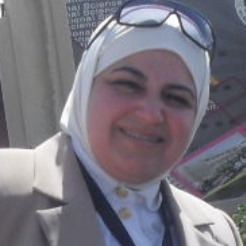
Omaima N. A. AL-Allaf
Work place: Faculty of Sciences & IT, Al-Zaytoonah University of Jordan, Dept. of Basic Sciences, P.O. Box130, Amman (11733), Jordan
E-mail: omaimaalallaf@zuj.edu.jo
Website:
Research Interests: Software Engineering, Artificial Intelligence, Neural Networks, Image Compression, Image Manipulation, Image Processing
Biography
Dr. Omaima N. A. Al-Allaf is an Assistant Professor at Basic Sciences department, Faculty of Sciences and IT, AL-Zaytoonah University of Jordan, Amman-Jordan (from 15 Feb. 2009). She received her B.Sc. in Computer Science from Dept. of CS, Faculty of Sciences, University of Mosul (1990-1994), and received her M.Sc. from Dept. of CS, Faculty of Computer & Mathematical Sciences, University of Mosul (1997-1999), Mosul, Iraq. She worked as Teacher B in Applied Science University (Private)-Amman-Jordan from 2000 to 2004. She received her PhD in CIS from the Department of CIS, AABFS- Amman-Jordan (2004-2008). During 2004-2008, she worked as a part time lecturer in the AABFS. Her research interests are in the fields of: Artificial Intelligence, Artificial Neural Networks, Image Processing, Web Engineering, and Software Process Models.
Author Articles
Removing Noise from Speech Signals Using Different Approaches of Artificial Neural Networks
DOI: https://doi.org/10.5815/ijitcs.2015.07.02, Pub. Date: 8 Jun. 2015
In this research, four ANN models: Function Fitting (FitNet), Nonlinear AutoRegressive (NARX), Recurrent (RNNs), and Cascaded-ForwardNet were constructed and trained separately to become a filter to remove noise from any speech signal. Each model consists of input, hidden and output layers. Two neurons in the input layer that represent speech signal and its associated noise. The output layer includes one neuron that represent the enhanced signal after removing noise. The four models were trained separately on stereo (noisy and clean) audio signals to produce the clean signal. Experiments were conducted for each model separately with different: architecture; optimization training algorithms; and learning parameters to identify model with best results of removing noise from speech signal. From experiments, best results were obtained from FitNet and NARAX models respectively. TrainLM is the best training algorithm in this case. Finally, the results showed that the suggested architecture of the four models have filtering ability to remove noise form both trained and not trained speech signals samples.
[...] Read more.Real-Time Group Face-Detection for an Intelligent Class-Attendance System
By Abdelfatah Aref Tamimi Omaima N. A. AL-Allaf Mohammad A. Alia
DOI: https://doi.org/10.5815/ijitcs.2015.06.09, Pub. Date: 8 May 2015
The traditional manual attendance system wastes time over students’ responses, but it has worked well for small numbers of students. This research presents a real-time group face-detection system. This system will be used later for student class attendance through automatic student identification. The system architecture and its algorithm will be described in details. The algorithm for the system was based on analyzing facial properties and features in order to perform face detection for checking students’ attendance in real time. The classroom’s camera captures the students’ photo. Then, face detection will be implemented automatically to generate a list of detected student faces. Many experiments were adopted based on real time video captured using digital cameras. The experimental results showed that our approach of face detection offers real-time processing speed with good acceptable detection ratio equal to 94.73%.
[...] Read more.Other Articles
Subscribe to receive issue release notifications and newsletters from MECS Press journals